Elevator manufacturer Otis (NYSE:OTIS) met Wall Street’s revenue expectations in Q3 CY2024, but sales were flat year on year at $3.55 billion. The company’s full-year revenue guidance of $14.2 billion at the midpoint also came in 1.1% below analysts’ estimates. Its non-GAAP profit of $0.96 per share wasalso in line with analysts’ consensus estimates.
Is now the time to buy Otis? Find out by accessing our full research report, it’s free.
Otis (OTIS) Q3 CY2024 Highlights:
- Revenue: $3.55 billion vs analyst estimates of $3.57 billion (in line)
- Adjusted EPS: $0.96 vs analyst expectations of $0.97 (in line)
- The company dropped its revenue guidance for the full year to $14.2 billion at the midpoint from $14.4 billion, a 1.4% decrease
- Management lowered its full-year Adjusted EPS guidance to $3.85 at the midpoint, a 0.6% decrease
- Gross Margin (GAAP): 30.4%, in line with the same quarter last year
- Operating Margin: 10.2%, down from 16.2% in the same quarter last year
- EBITDA Margin: 11.6%, down from 18.2% in the same quarter last year
- Free Cash Flow Margin: 10.2%, up from 7.7% in the same quarter last year
- Organic Revenue rose 1.2% year on year (5.2% in the same quarter last year)
- Market Capitalization: $40.6 billion
Company Overview
Credited with inventing the first hydraulic passenger elevator, Otis Worldwide (NYSE:OTIS) is an elevator and escalator manufacturing, installation and service company.
General Industrial Machinery
Automation that increases efficiency and connected equipment that collects analyzable data have been trending, creating new demand for general industrial machinery companies. Those who innovate and create digitized solutions can spur sales and speed up replacement cycles, but all general industrial machinery companies are still at the whim of economic cycles. Consumer spending and interest rates, for example, can greatly impact the industrial production that drives demand for these companies’ offerings.
Sales Growth
A company’s long-term performance can indicate its business quality. Any business can put up a good quarter or two, but many enduring ones grow for years. Over the last five years, Otis grew its sales at a sluggish 1.7% compounded annual growth rate. This shows it failed to expand in any major way, a rough starting point for our analysis.
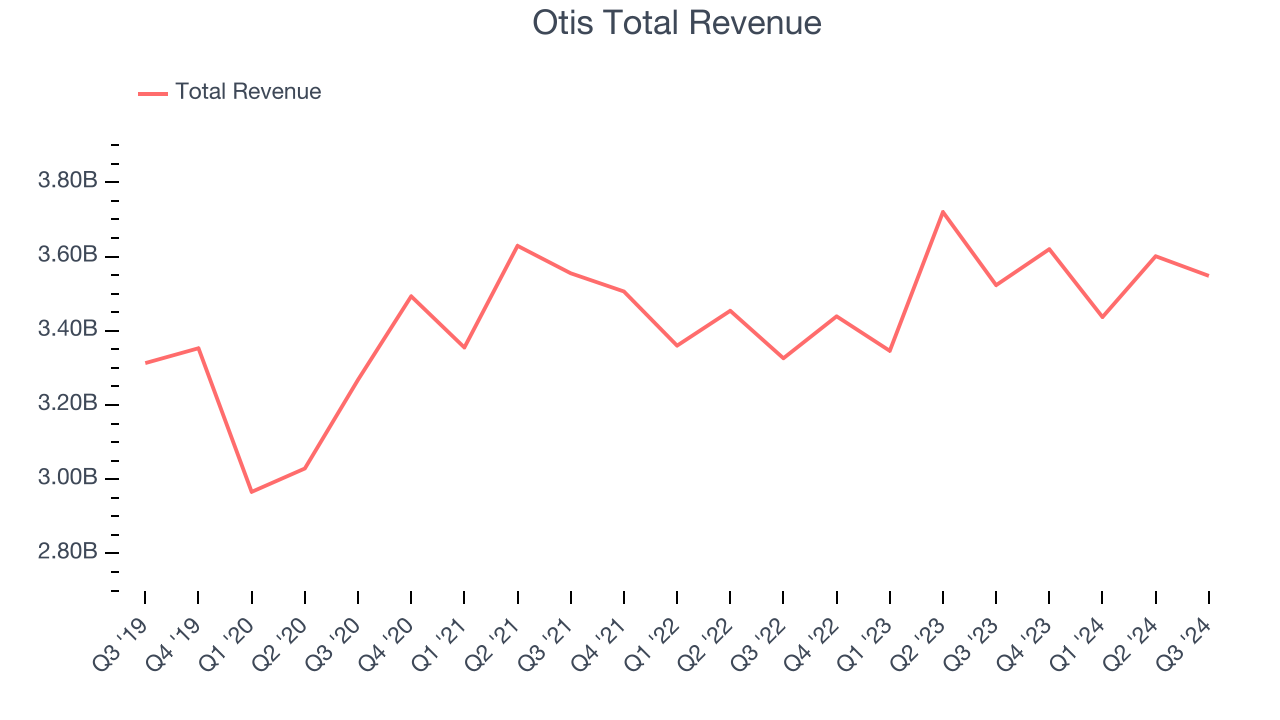
We at StockStory place the most emphasis on long-term growth, but within industrials, a half-decade historical view may miss cycles, industry trends, or a company capitalizing on catalysts such as a new contract win or a successful product line. Otis’s annualized revenue growth of 2% over the last two years aligns with its five-year trend, suggesting its demand was consistently weak. 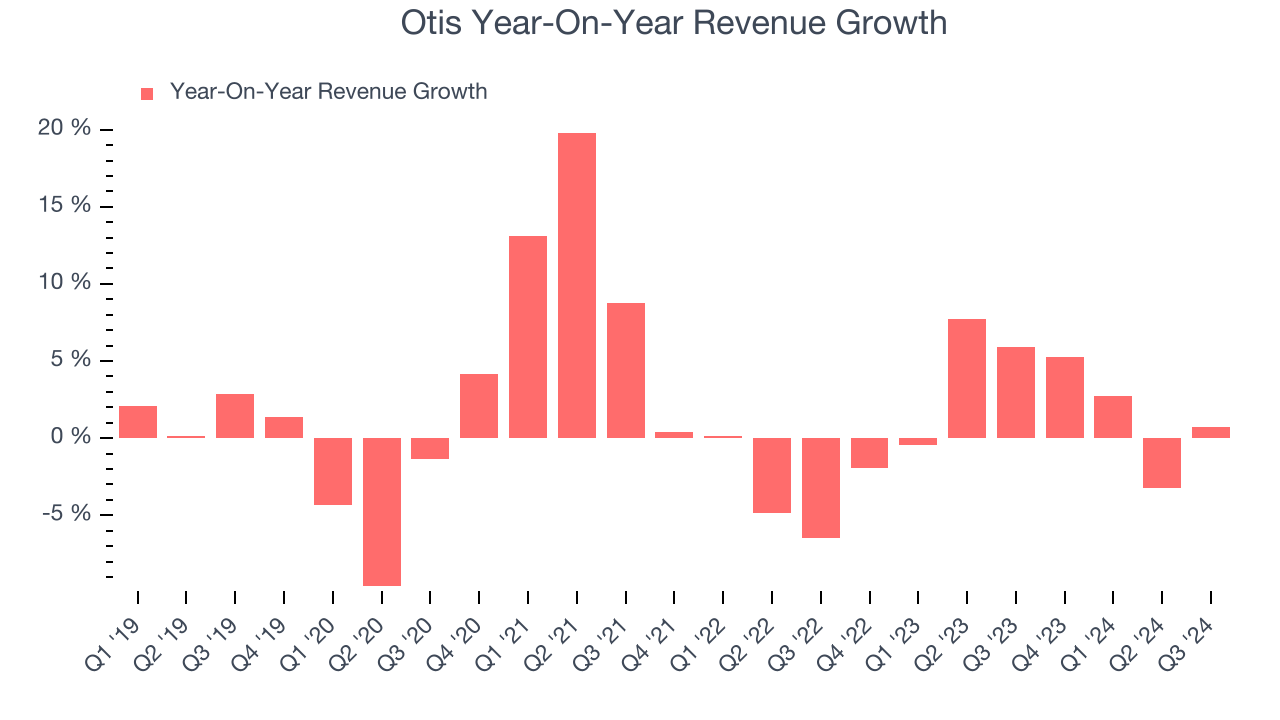
We can dig further into the company’s sales dynamics by analyzing its organic revenue, which strips out one-time events like acquisitions and currency fluctuations because they don’t accurately reflect its fundamentals. Over the last two years, Otis’s organic revenue averaged 4% year-on-year growth. Because this number is better than its normal revenue growth, we can see that some mixture of divestitures and foreign exchange rates dampened its headline performance. 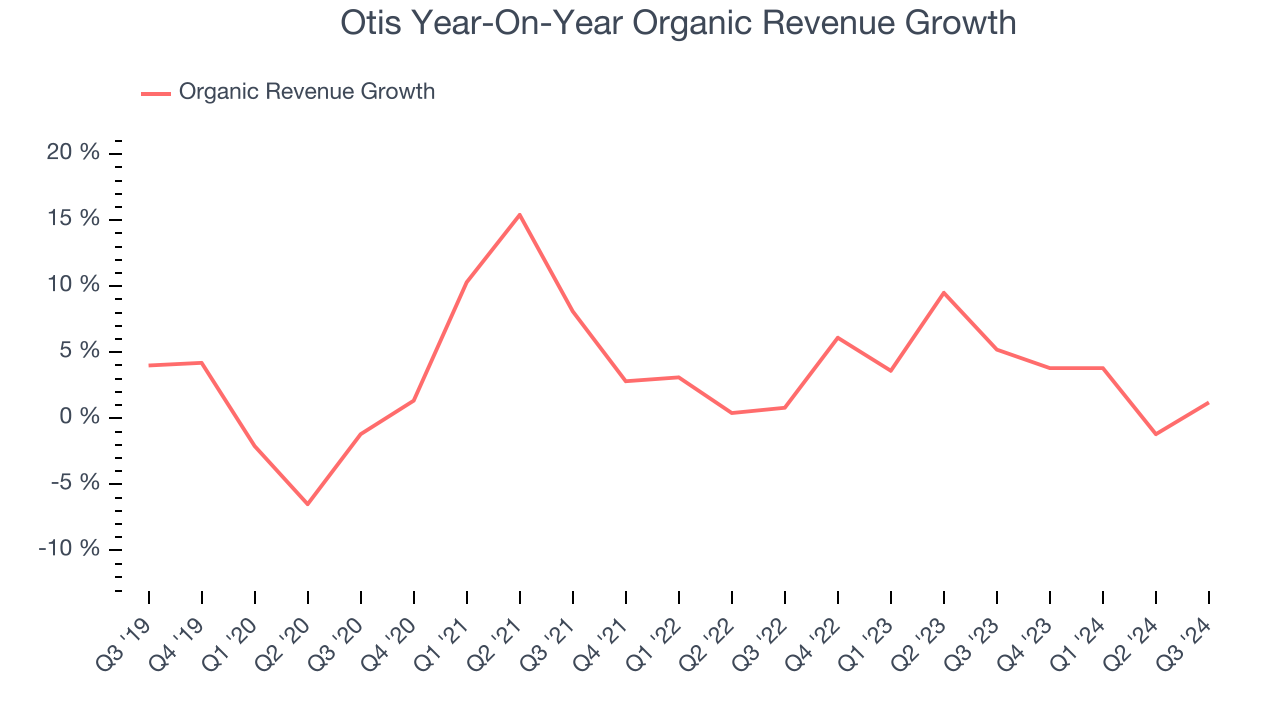
This quarter, Otis’s $3.55 billion of revenue was flat year on year and in line with Wall Street’s estimates.
Looking ahead, sell-side analysts expect revenue to grow 3.8% over the next 12 months. While this projection indicates the market thinks its newer products and services will spur better performance, it is still below average for the sector.
Unless you’ve been living under a rock, it should be obvious by now that generative AI is going to have a huge impact on how large corporations do business. While Nvidia and AMD are trading close to all-time highs, we prefer a lesser-known (but still profitable) semiconductor stock benefitting from the rise of AI. Click here to access our free report on our favorite semiconductor growth story.
Operating Margin
Otis has been an optimally-run company over the last five years. It was one of the more profitable businesses in the industrials sector, boasting an average operating margin of 14.4%. This result was particularly impressive because of its low gross margin, which is mostly a factor of what it sells and takes huge shifts to move meaningfully. Companies have more control over their operating margins, and it’s a show of well-managed operations if they’re high when gross margins are low.
Looking at the trend in its profitability, Otis’s annual operating margin rose by 1.1 percentage points over the last five years, showing its efficiency has improved.
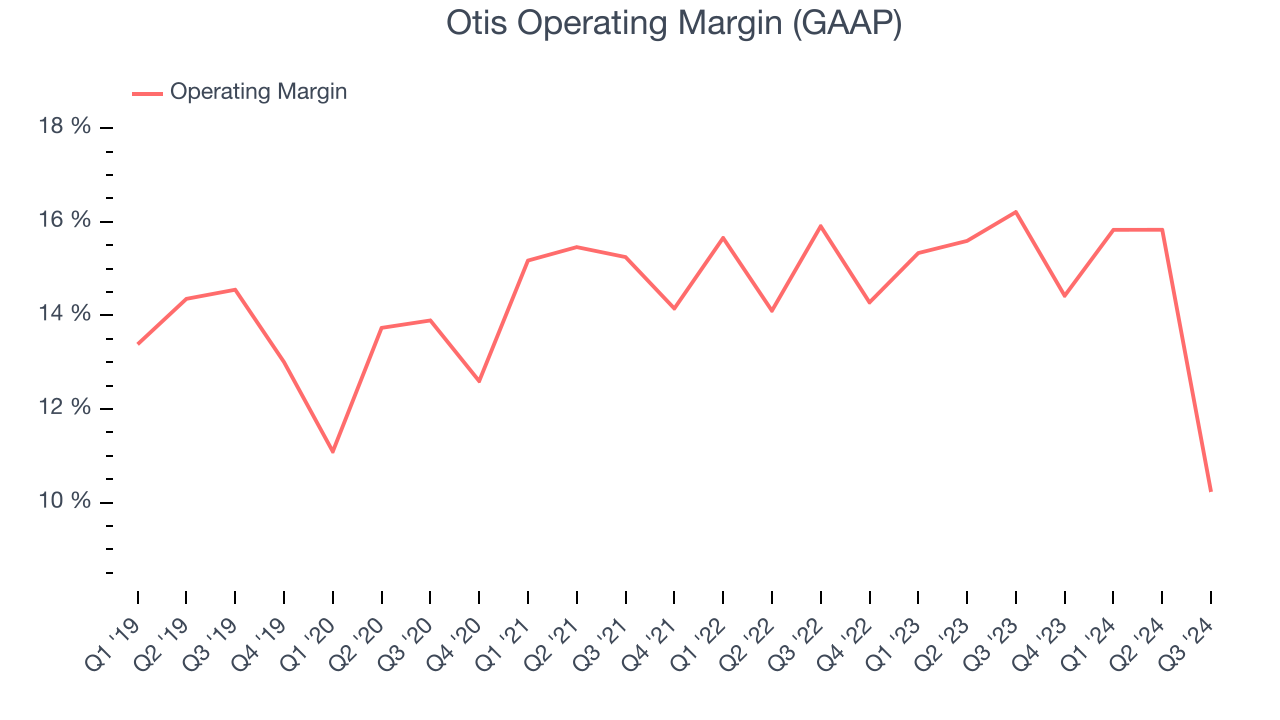
In Q3, Otis generated an operating profit margin of 10.2%, down 6 percentage points year on year. Since Otis’s operating margin decreased more than its gross margin, we can assume it was recently less efficient because expenses such as marketing, R&D, and administrative overhead increased.
Earnings Per Share
We track the long-term change in earnings per share (EPS) for the same reason as long-term revenue growth. Compared to revenue, however, EPS highlights whether a company’s growth was profitable.
Otis’s EPS grew at a decent 9% compounded annual growth rate over the last five years, higher than its 1.7% annualized revenue growth. This tells us the company became more profitable as it expanded.
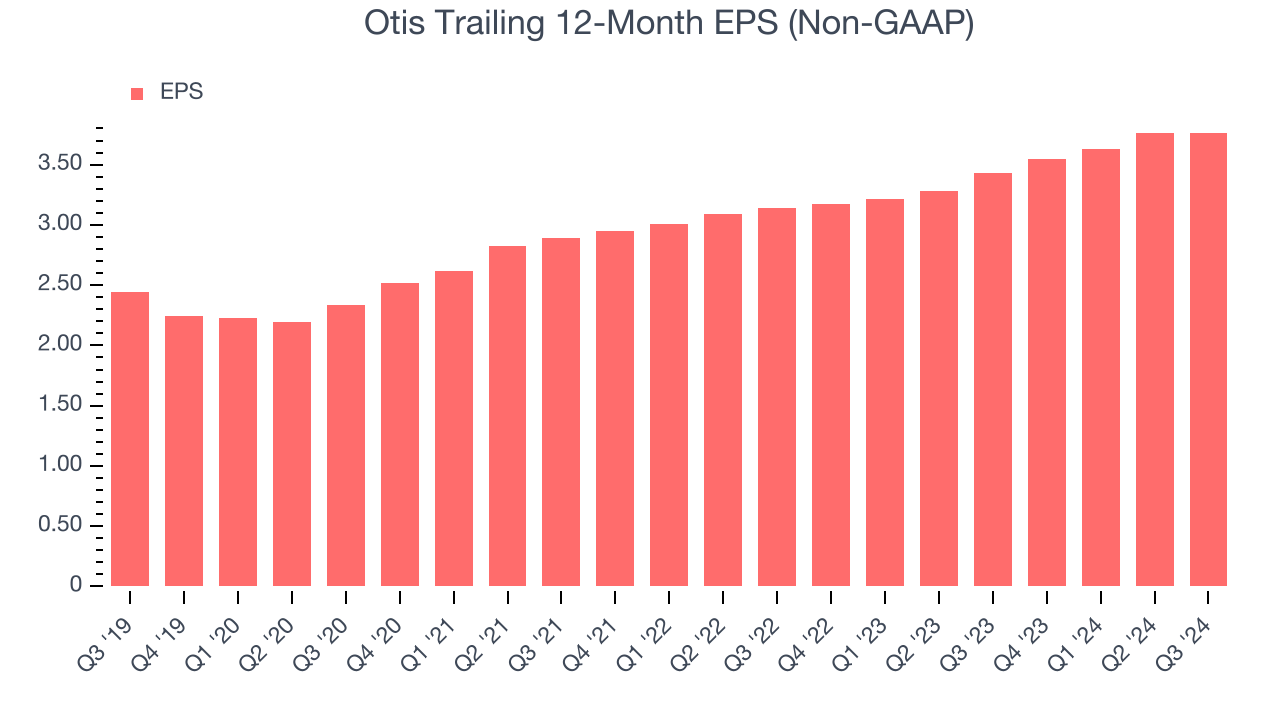
We can take a deeper look into Otis’s earnings to better understand the drivers of its performance. As we mentioned earlier, Otis’s operating margin declined this quarter but expanded by 1.1 percentage points over the last five years. Its share count also shrank by 7%, and these factors together are positive signs for shareholders because improving profitability and share buybacks turbocharge EPS growth relative to revenue growth. 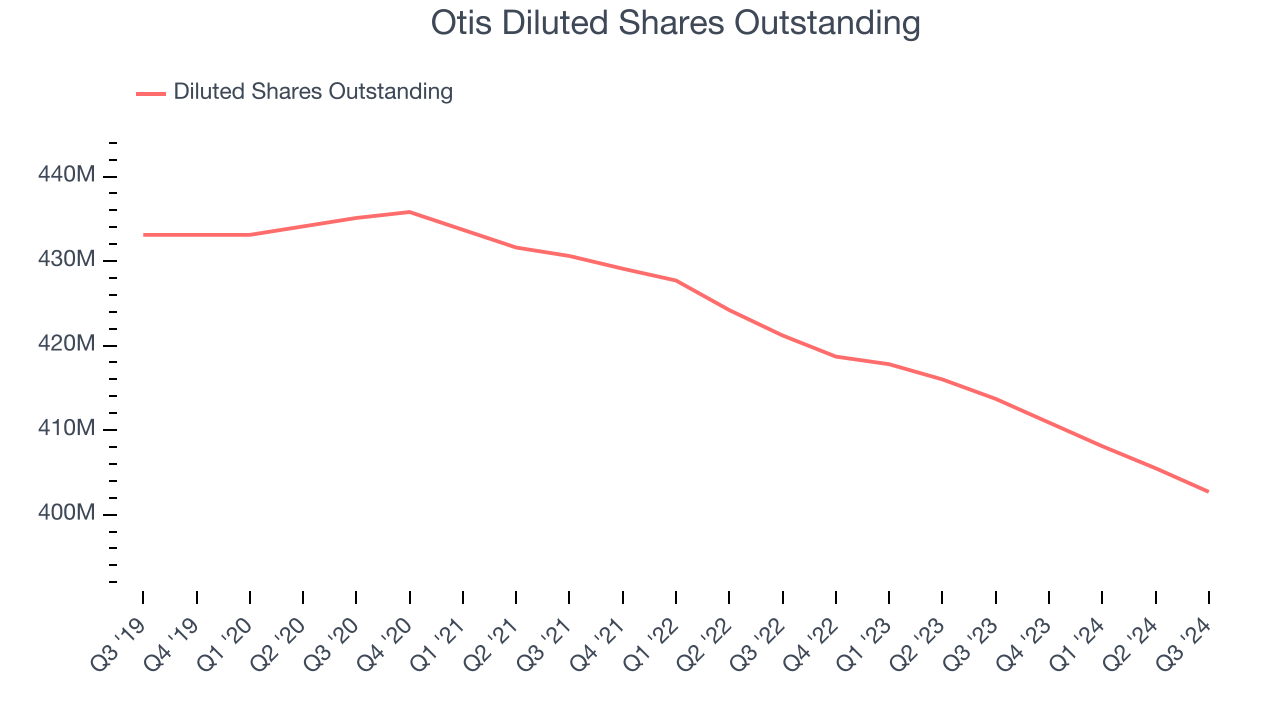
Like with revenue, we analyze EPS over a shorter period to see if we are missing a change in the business.
For Otis, its two-year annual EPS growth of 9.6% is similar to its five-year trend, implying stable earnings power.In Q3, Otis reported EPS at $0.96, in line with the same quarter last year. This print was close to analysts’ estimates. Over the next 12 months, Wall Street expects Otis’s full-year EPS of $3.77 to grow by 9%.
Key Takeaways from Otis’s Q3 Results
We struggled to find many strong positives in these results. Its EBITDA missed and its full-year revenue guidance slightly fell short of Wall Street’s estimates. Overall, this was a weaker quarter. The stock traded down 3% to $98.33 immediately after reporting.
Otis may have had a tough quarter, but does that actually create an opportunity to invest right now?We think that the latest quarter is only one piece of the longer-term business quality puzzle. Quality, when combined with valuation, can help determine if the stock is a buy. We cover that in our actionable full research report which you can read here, it’s free.
